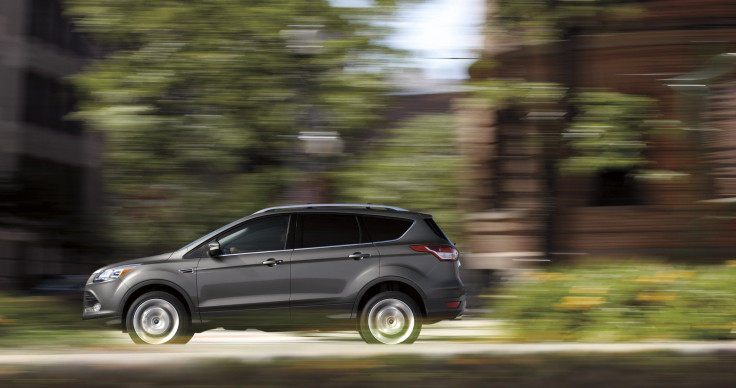Car Sales Plunged In 2015 As Americans Piled Into Trucks And SUVs

Sales of trucks and sport utility vehicles are rapidly outpacing sales of all other vehicle types in the U.S. as consumers ditch four-door sedans and flock to a seemingly endless selection of small, midsize and gargantuan SUVs. According to 2015 sales data released by the world’s top automakers on Tuesday, trucks and SUV sales dominated last year.
Among the Detroit Three automakers, sales of small, midsize and large sedans fell by about 11 percent last year. Meanwhile deliveries of pickup trucks and SUVs shot up 15 percent compared to 2014. And this is more than just a temporary trend, according to Michelle Krebs, senior analyst at Autotrader.com.
“I don’t see any change in consumers favoring sport utilities and trucks over small and midsize cars,” said Krebs.
Automakers are reporting December U.S. car sales Tuesday, and indications are that sales for the whole of 2015 will smash records, with sales beating the previous record of 17.4 million vehicles, set in 2000.
Ford's F-150 pickup truck was the best-selling truck in the United States last year, and marked its 34th year as the best-selling vehicle of any kind, Reuters reported.
Erich Merkle, sales analyst at Ford Motor, said two things are fueling the ongoing shift in consumer tastes toward trucks and SUVs. One is the recovery in the U.S. housing market from the dark days of the 18-month Great Recession that ended 2009. Historically speaking, truck sales act as a barometer for both construction activity and consumer confidence — they tend to rise as Americas buy or build more homes.
The other factor — not tied to the ebb and flow of demand for workhorse vehicles— is a longer-term shift in consumer tastes, and Merkle says that's where the SUVs come in.
“This demand for small SUVs is coming from both baby boomers and millennials. We think this is a long-term trend [that will] play out for years to come,” he said. “The oldest millennials are in their mid-30s and starting families. The baby boomers like the ease of access that these SUVs offer.”
According to Ford, full-size pickups now make up about 13 percent of sales in the industry, while SUVs make up about a third. By 2020, the automaker estimates that SUVs could make up about 40 percent of the market, thanks to increased fuel economy and smaller body types. This means that trucks and SUVs could make up the majority of new-auto sales by the end of the decade.
Does this portend the end of the four-door sedan? Don’t bet on it. It’s still a significant slice of the market, said Alec Gutierrez, senior analyst at Kelley Blue Book.
“From a volume perspective, there are still plenty of sedans being sold,” said Gutierrez, noting that small and midsize cars still represent about 28 percent of the car market. "But we're approaching a saturation point,” he added.
© Copyright IBTimes 2024. All rights reserved.






















